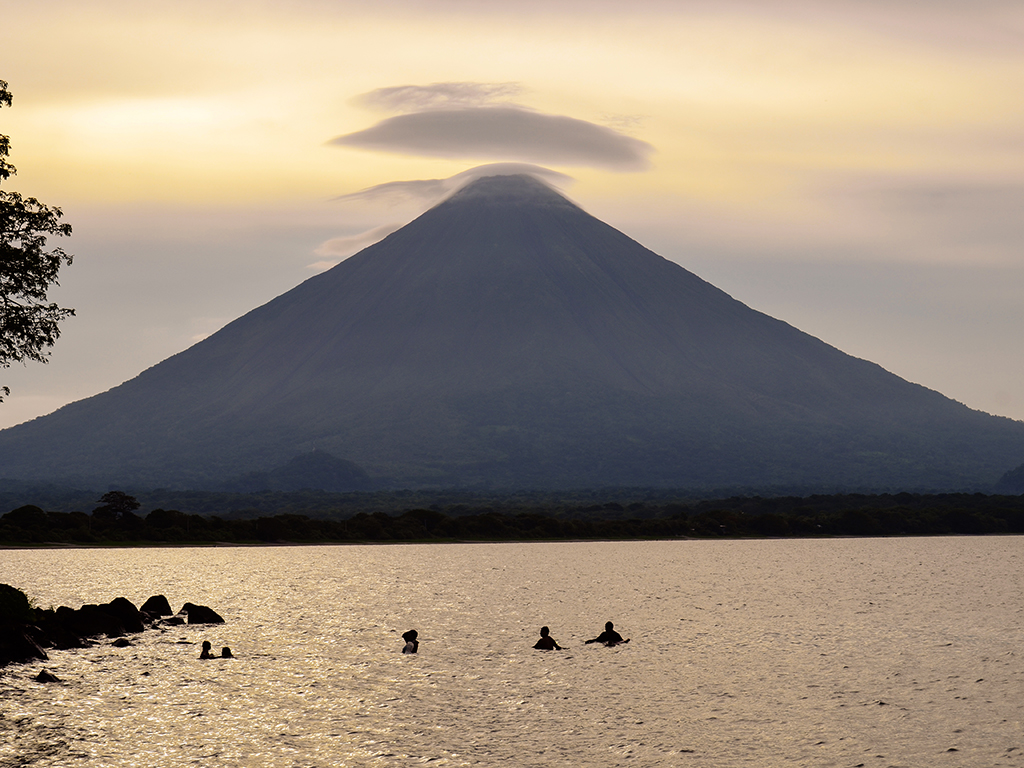Recent stability in the Central American nation of Nicaragua leaves it poised to become one of the region’s most popular tourist attractions. Although it would have seemed inconceivable thirty years ago, Nicaragua has turned itself around, and a growing influx of expatriates seeking a different lifestyle have made tourism one of the country’s biggest, and most important industries.
Stressing this newfound importance, Nicaragua’s President Daniel Ortega has repeatedly underlined his desire to promote tourism in the country, especially to help tackle poverty.
From agritourism to ash-boarding
This could not be more true than for agritourism. A relatively new phenomenon, agritourism capitalises on those who are interested in how the food they consume makes its way to their plate. This type of holiday allows tourists to visit a farm and get involved or gain an understanding in tasks related to farming like picking produce. Many coffee plantations across Nicaragua have been quick to pick this up, with wild success.
Nicaragua is opening its doors to the rest of
the world
Agritourism is good both for visitors and for the farmers, as it provides a secondary stream of income that sustains local farming communities. Proponents of agritourism extol its virtues as a more ethical means of seeing the world – not only do visitors receive a more accurate depiction of a country, but the places they visit have not been built at the expense of local citizens or environment.
One of the most popular tourist attractions in Nicaragua is ash-boarding, a new sport where participants sit on a skateboard-like contraption and slide precariously and extremely quickly down the sides of some of the country’s biggest (and still active) volcanoes.
Although dangerous, the country is trying to appeal to backpackers and younger travellers as much as it is trying to cater to older, luxury tourists.
Low-impact ecotourism is also on the rise in the country, with travellers keen to explore some of the country’s pristine jungle and volcanic regions. This small-scale tourism directly benefits the country in a number of ways, not least in helping it to maintain and preserve these fragile areas.
Nature can’t be tamed
Referred to as the ‘land of lakes and volcanos’, visitors often cite the ‘off-the-beaten-track’ feel to Nicaragua as being a big motivator for their visit. While tourism is growing at an unprecedented rate, the country is still the least visited in the region, perhaps because of historic problems and lack of exposure to a wider audience.
The country is teeming with interesting locales; from volcanoes to some of the best surfing in the world, Nicaragua is nothing if not diverse. Granada, commonly regarded as the country’s tourism capital, is quite possibly the oldest European city in the Americas.

Founded in 1524, the city has a distinctly Andalusian feel, and it is now distinctly dependent on the influx of tourists. Nestled at the shores of Lake Nicaragua, the world’s twentieth largest, the city’s narrow streets are reminiscent of many European cities, as alleyways and cubbyholes give way to important historical monuments.
Fishing is also important here: Lake Nicaragua is rich with marine and aquatic life, even boasting freshwater sharks that make the journey upstream from the Caribbean. Granada was previously the country’s capital. A conflict of ideals between liberal parties, who preferred Granada, and conservative ones who preferred León, forced a compromise that selected Managua as Nicaragua’s prime city in the 1850s.
Vying for capital
León is widely considered to be Nicaragua’s intellectual capital because of the National Autonomous University of Nicaragua which has been based there for over 200 years. With a vibrant atmosphere the town is most popular with younger travellers, who stay for the cheap living costs and growing bar scene. Visitors repeatedly say that these cities are the highlight of the country because of their history, cost and atmosphere.
Both Granada and León are only an hour or so drive from the capital, Managua.
Nicaragua’s capital is one of Central America’s largest cities. Originally a small fishing village, a sizeable proportion of the country’s population now live in this bustling urban centre.

The influence of US visitors is clear here; the city has many chains that are commonplace in other countries but still relatively rare in Central America, including McDonalds and Pizza Hut. These are recent developments, but ones that prove that Nicaragua is opening its doors to the rest of the world, both for business and tourism.
Now, Nicaragua has burgeoning expatriate presence, particularly from the US. The reasons for a growing American community in Nicaragua are not hard to understand. Many choose to live in Nicaragua because of the cheap cost of living, friendly atmosphere and the safety of the country.
Like neighbour Costa Rica, which has itself experienced a tourism boom in the past few years, Nicaragua is once again proving that Central America has plenty to offer to an international traveller.





